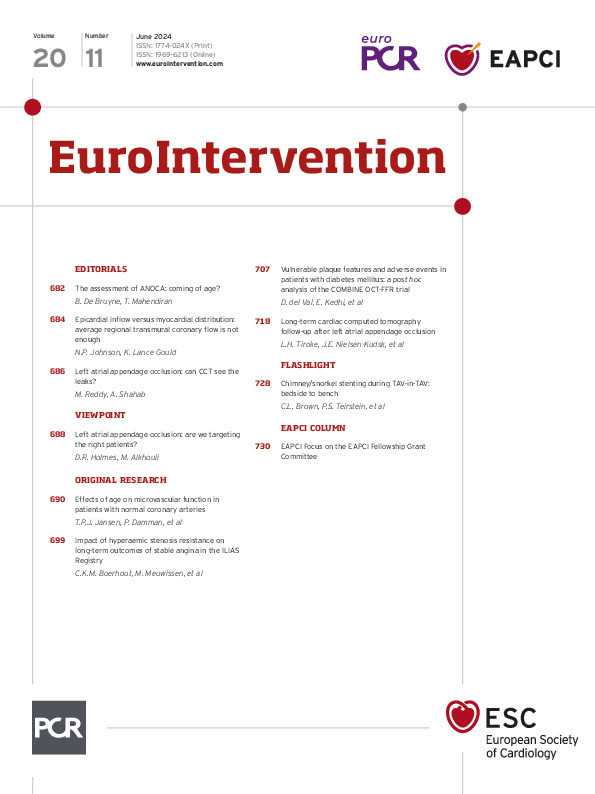From perspectives on left atrial appendage occlusions or original research on the effects of ageing or diabetes and vulnerable plaque to chimney/snorkel stenting during TAV-in-TAV – there’s something for everyone in this issue of EuroIntervention...take a look.
Effects of age on microvascular function
Tijn P.J. Jansen, Peter Damman and colleagues use continuous thermodilution to assess whether age has an effect on microvascular function in patients with normal coronary arteries. They demonstrate an age-dependent increase in hyperaemic microvascular resistance and a decrease in microvascular function, with the latter most evident in patients with smooth coronary arteries.
Clinical value of HSR in stable angina
By using the combined assessment of pressure and flow, the hyperaemic stenosis resistance index may overcome some of the limitations of conventional physiological indices. Vulnerable plaque features and adverse events confirm that hyperaemic stenosis resistance improves the diagnostic accuracy of the detection of ischaemia-inducing lesions and has an important prognostic value for the long-term risk of target vessel failure.
Vulnerable plaque features and adverse events
David del Val, Elvin Kedhi and colleagues examine the prognostic impact of optical coherence tomography-detected vulnerability features (OCT-VFs), either individually or in combination, in predicting the incidence of the lesion-oriented composite endpoint (LOCE) in diabetic patients with non- ischaemic lesions. Thin-cap fibroatheroma was the strongest single predictor of future LOCE events but the risk increased significantly with the simultaneous presence of four OCT-VFs.
Long-term LAAO safety with the Amplatzer Amulet
Lasse Hubertus Tiroke, Jens Erik Nielsen- Kudsk and colleagues evaluate the long- term safety and durability of the Amplatzer Amulet device after left atrial appendage occlusion. Their results suggest that the prevalence and size of peridevice leakage remain stable over time and rarely seal up or progress, underlining the importance of the immediate procedural outcome.

